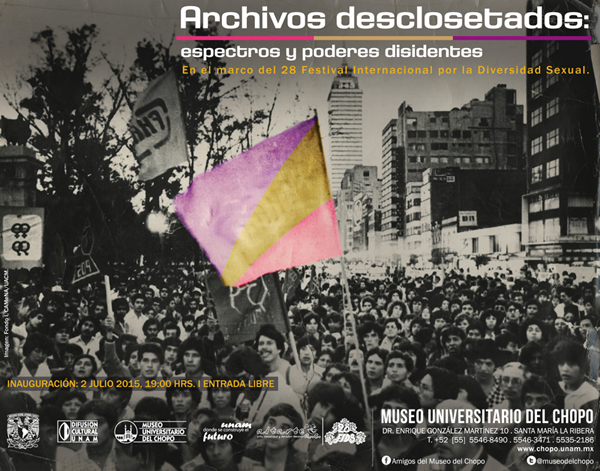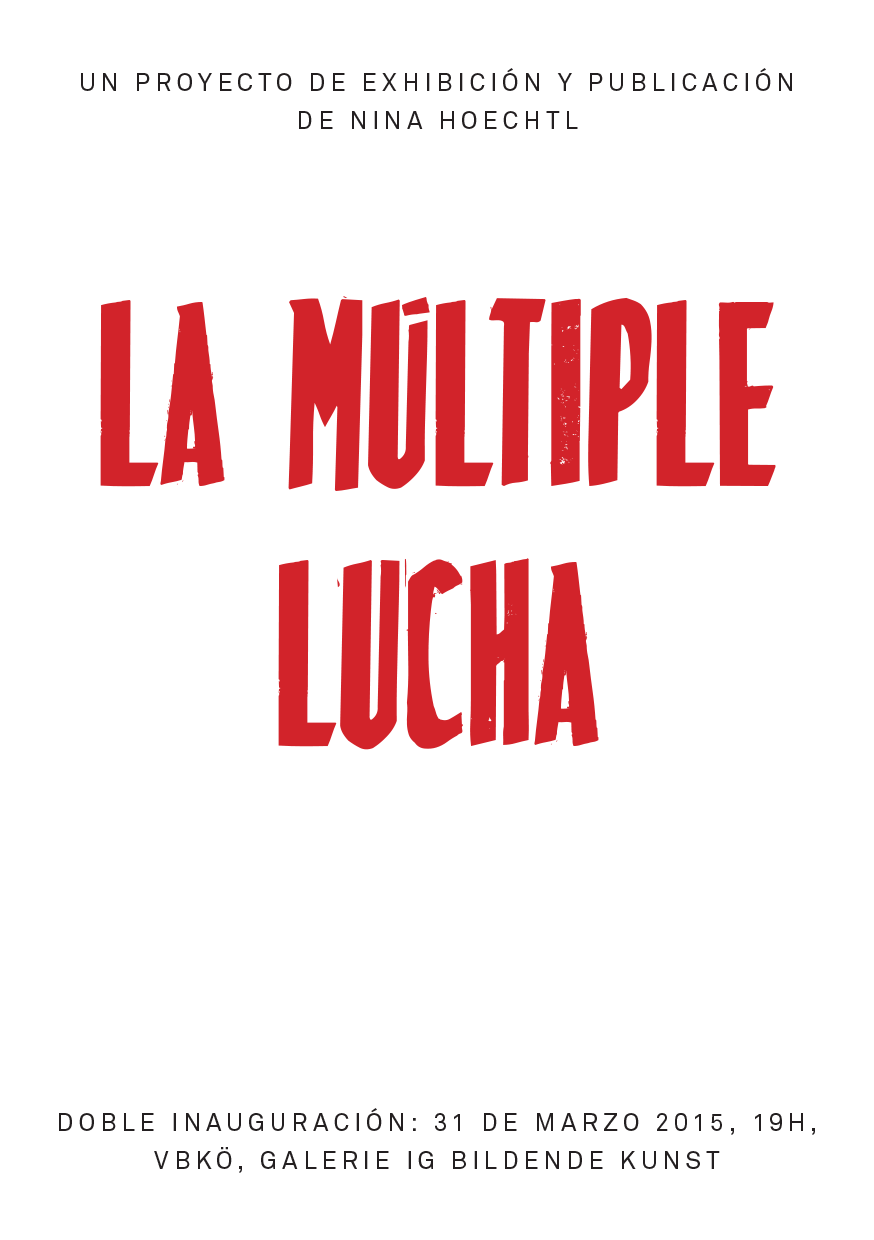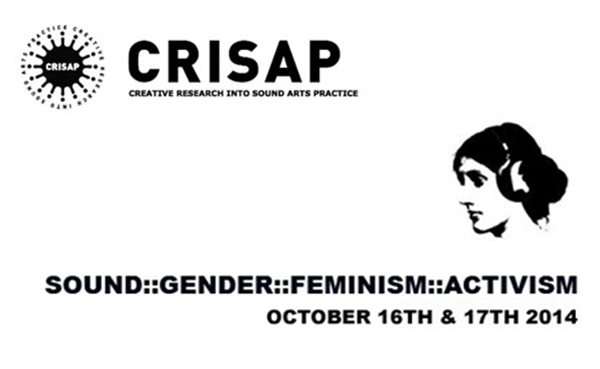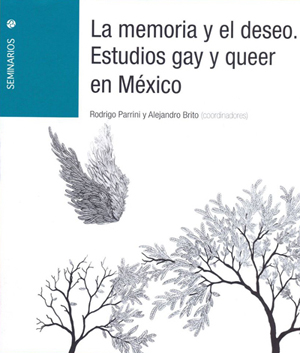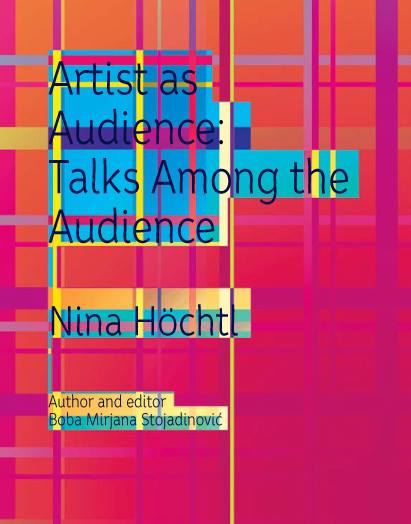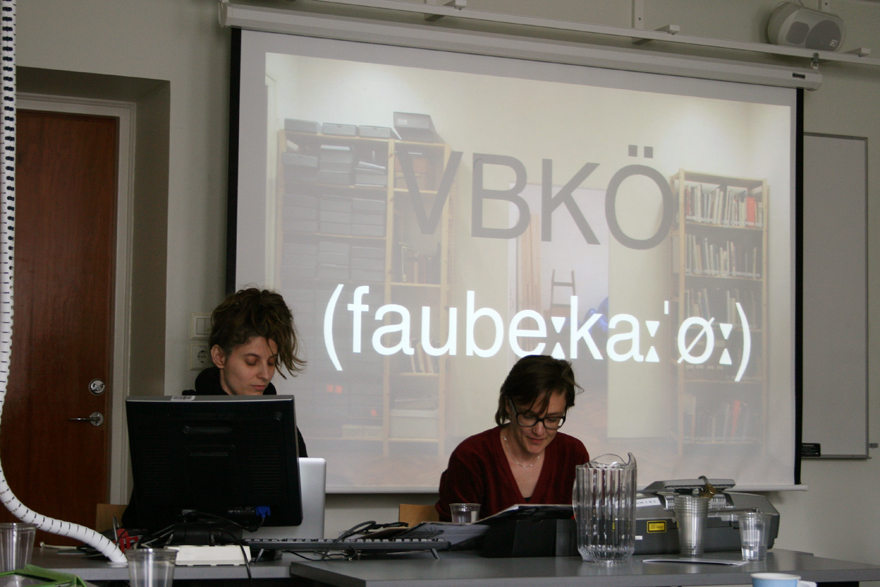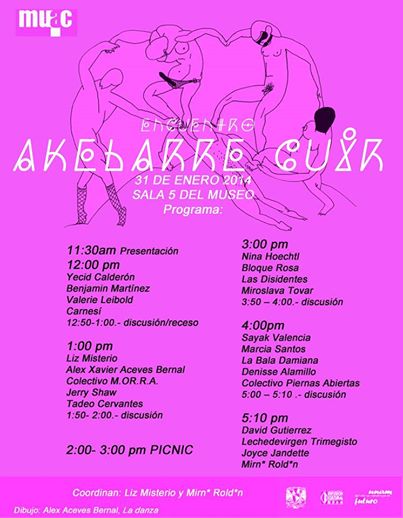Blog
Ausstellung: OUT OF THE CLOSET ARCHIVE, 2. Juli, Chopo Universitätsmuseum
OUT OF THE CLOSET ARCHIVE: GESPENSTER UND DISSIDENTE KRÄFTE
2. Juli – 10. September 2015, Chopo Universitätsmuseum
Im Rahmen des 28. Internationalen Festivals für sexuelle Diversität (FIDS)
Eröffnungsprogramm:
19h Demonstración Tupper Sex (Contacto Condondería)
19:30h Demostración de productos por Lovemouse – tienda para hombres trans
20h Karaoke con Walpurgis
21h DJ ALI GUA GUA
Kuratorischer Vorschlag: Nina Hoechtl/Naomi Rincón Gallardo
Forschungsteam: Fidel García Reyes, Maria de Lourdes Velasco, Amor Teresa Gutiérrez, José „Toñe“ Hernández, Liz Misterio, Benjamín „Walpurgis“ Martínez
Wandmapping: Alex Aceves
Dieses Mapping wird durch den Beleuchtungseffekt einer Discokugel angerissen und von herumspukenden Gespenstern behaust – ein unvermeidlicher Anteil, wenn in die archivistische Revision eingetaucht wird. Auch wenn es den bewegten Lichtpunkten dieser Umdrehung möglich ist einige Präsenzen zu beleuchten, bleiben dabei gleichzeitig andere Materialien, Erinnerungen und Praxen in der Dunkelheit. Noch unzugängliche Archive als Geheimnisse, die den Wunsch, sie zu lüften, aufrecht erhalten. Out of the Closet Archive als Orte, die den Zugang zu einer Vergangenheit erleichtern und somit Möglichkeiten einer anderen Gegenwart und Zukunft andeuten. Exorzistische Archive kultureller Praxen, die immer noch verwunschen sich einer Mystifizierung widersetzen.
Von den Spuren genussvoller und homosexueller – grösstenteils biomännlicher – Zusammenkünfte zur Notwendigkeit einer separatistischen Lesbenparade in Mexiko Stadt; von der Regenbogenparade zur kategorischen Ablehnung der Nichtkategorie queer; von den dramatischen Spaltungen zwischen den verschiedenen Gruppen dissidenter Sexualität zum Massenouting; von homosexuellen Aktivismen mit einer sozialistischen Ausrichtung zur Vervielfältigung von Konsumnischen der sexuellen Diversität, dieses Mapping versucht mit Ungereimtheiten, Widersprüchen, unassimilierbare Differenzen, Kommunikationsunvermögen, Abwesenheiten und Begierden zu interagieren, um die Komplexitäten von sexuell-politischen Praxen zwischen Epochen und Generationen aufzuzeigen.
In diesem ambiguen Bereich, den wir sexuelle Diversität nennen, wie kam es dazu, dass die uns zur Verfügung stehenden zeitgenössische Subjektivitäten denkbar, lebens- und wünschenswert wurden? Welche Schmerzen, Schweißausbrüche, Verluste, Freuden, Trennungen, Schamgefühle, Heimlichkeiten, Langeweile, Wiederholungen und Konflikte sind unseren Möglichkeiten heutiger Handlungs(spiel)räumen vorausgegangen? Und welche fehlen? Wie können wir uns weiterhin den merkantilen, institutionellen Verführungen und dem possessiven Binom Macht/Wissen widersetzen? Wie kann „eine Intersektionalität von Kämpfen und nicht [eine Feier] von Identitäten“ (Angela Davis, 2015) gedacht und an ihr gearbeitet werden?
Teilnehmer*:
Altres Costa-Amic Editores
Archivo Histórico y Fanzinoteca del Museo Universitario del Chopo
Archivo Histórico de LeSVOZ A. C. y Comité Organizador de la Marcha Lésbica de México.
Archivo Histórico del Movimiento de Lesbianas Feministas de México,1976-2015, YMY. Yan María Yaoyólotl
Archivos y memorias diversas
Archivo Piratas de Género
Archivo sobre el movimiento BI. Jorge Yañez
Archivo Super Gay, Los 41, GHAI. José Luis Castillo Torres
Bala Studio
Colección Rafael Cruz Báez
Colección Horacio Guerrero
Colección Musas de Metal Grupo de Mujeres Gay. Paulina Martínez Peredo
Jorge Claro León
Contacto Condonería
Armando Cristeto
Diversidad sexual en la producción literaria mexicana: colección de Fidel García Reyes
Fondo I, CAMeNA/UACM
Jorge Estrada
Fabiola García
Rotmi Enciso, Ina Riaskov / Producciones y Milagros Agrupación Feminista / Archivo feminista
Museo del Estanquillo
Lovemouse
Luna Gótica
Sladom
Ausstellungs- und Publikationsprojekt: LA MÚLTIPLE LUCHA, IG BILDENDE KUNST und VBKÖ, Wien (Österreich)
Mein Ausstellungs- und Publikationsprojekt LA MÚLTIPLE LUCHA eröffnet am 31. März in der IG BILDENDE KUNST und der VBKÖ in Wien (A).
Aus dem Spanischen: „Können wir uns eine feministische Ökonomie der Kultur vorstellen?“
Für Kamion, eine Zeitschrift für politische Theorien und nützliche Nachrichten aus dem Alltag von Prekarisierung und Krise, habe ich den Text „¿Es posible una economía feminista de la cultura?“ von Javier Rodrigo aus dem Spanischen übersetzt, der dann von Manuela Zechner überarbeitet und leicht gekürzt wurde.
Das (castillanische) Original findet sich auf auf der (katalanischen) Nativa-Webplattform und die deutsche Version auf den Seiten 85-88 in Kamion #1 AUS DEN KREISLÄUFEN DES RASSISMUS.
Präsentation: INVASORIX @ Sound:Gender:Feminism:Activism 2014, London
INVASORIX präsentiert „AQUÍ Y AHORA: Non-professionalization as a strategy“ im Rahmen des zweiten Sound:Gender:Feminism:Activism (SGFA2014) research event, London College of Communication, 16.-17. Oktober, 2014.
Neuer Text „Lucha libre: un espacio liminal“ (in Spanisch)
Mein Text „Lucha libre: un espacio liminal. Lis exótiquis “juntopuestas” a las categorías clasificadoras, unívocas y fijas“ wurde in der Anthologie La memoria y el deseo. Estudios gay y queer en México (2014) R. Parrini y A. Brito (coord.) PUEG-UNAM. publiziert.
Download text (in Spanisch)
Über La memoria y el deseo. Estudios gay y queer en México (in Spanisch):
Una antología tiene sentido si compila artículos que constituyan un aporte a un campo de estudios. Es aún relevante cuando dicho campo apenas se está formando y nos encontramos en los inicios de una producción intelectual que debiera incrementarse en lo venidero. Ambas condiciones se cumplen en este caso. Los textos que compilamos son novedosos y constituyen un aporte a las investigaciones sobre otras sexualidades en México, son producto de largo trabajos de investigación y reflexión y están sustentados en un material bibliográfico y empírico muy sólido. Pero también representan un retruécano, por así llamarlo, a ciertas versiones ya establecidas de las historias e identidades minoritarias. En ese sentido, creemos que son textos de segunda generación en los debates que nos conciernen, lo que indica, a nuestro parecer, que existe una masa crítica de conocimientos que puede ser discutida. Si tuviéramos que dirimir el tono de los artículos diríamos que en ellos prima la audacia. Hay algo inaudito en muchos de los trozos escritos y pensados. Nuestros colegas se han atrevido a explorar mundos y subjetividades, historias y relatos, actos y pasiones, olvidos y subalternidades inéditos. La arqueología del pasado o la historia del presente son manifestaciones de un tesón personal, pero también colectivo, para explicar deseos, cuerpos e identidades así como instituciones, dispositivos y comunidades.
Rodrigo Parrini y Alejandro Brito (coordinadores)
Download neue Publikation: „Artist as Audience: Nina Höchtl“
Eine neue Publikation in Englisch
Artist as Audience: Talks Among the Audience
Nina Höchtl
The book Artist as Audience: Talks Among the Audience was published in Serbian in early 2014. It presented the project Artist as Audience:: Forum: Audience on Visual Artworks that runs since 2010 in Belgrade. The book contains 31 discussions of which 15 are completed with edited transcripts of the discussions.
After the Serbian version a booklet in English is presented to the public. It contains an introduction and a discussion on the work by Nina Höchtl.
Download the booklet in English for free: https://razgovori.files.wordpress.com/2014/08/artist-as-audience_nina-hoechtl.pdf
Publisher: Artist AssociationFrekvencija
Author and editor: MFA Boba Mirjana Stojadinović
Soft covers, b/w print, 48 pages
Format: 145 x 185 cm
ISBN 978-86-917153-1-1
This publication was made possible by the Austrian Cultural Forum, Belgrade.
2014.
Belgrade, Serbia
Lecture performance „The VBKÖ’s Archive as a Site of Political Confrontation or How to Sing Out of Tune?“
Im Rahmen der Fourth Biennial Conference of the European Network for Avant-garde and Modernism Studies UTOPIA EAM 2014 (University of Helsinki, 29. -31. August 2014), Teil des Panels „All Women Art Spaces As Heterotopias“, präsentierten Julia Wieger und ich die Lecture Performance „The VBKÖ’s Archive as a Site of Political Confrontation or How to Sing Out of Tune?“.
The lecture performance focuses on the 1970’s activities of an all women art space in Vienna, which was founded in 1910 and is still active today: The Vereinigung bildender Künstlerinnen Österreichs (Austrian Association of Women Artists, VBKÖ). The VBKÖ initially campaigned for the artistic, economic and educational interests of women in the arts and rented a space in the center of Vienna, where it still is today. Despite its progressive beginnings, the association decided to collaborate with the Nazi regime in 1938. From the perspective of the nascent Viennese Feminist Art Movements in the 1970’s, the association had fallen into oblivion. Nevertheless, it was active in the 1970’s – it is just not clear what these activities were about. Who were the members? Did internal discussions about a post-Nazi position take place? Was there any contact to the local Feminist Artist Movements? We look at the space of the VBKÖ that existed unnoticed and in parallel to the feminist movements in order to not only figure out how we can still inhabit it today but also how a historical methodology might also be a political intervention into the present.
More on the panel:
ALL WOMEN ART SPACES AS HETEROTOPIAS
Saturday, 30th of August, 1:30-4:45pm
One of the important elements of the women’s art movement emerging in the 1970s was the creation of all women art spaces. They existed for a longer period of time or just during one exhibition or even one performance. They were to offer an alternative to the unfriendly reality of male-dominated art world and aimed at creating an environment where women artists could address the experiences of women. The most famous of them – Womanhouse (Los Angeles 1972) – has already been thoroughly analysed. This panel seeks to explore much lesser known women art spaces functioning in different European countries. Its focus will be on the 1970s but proposals that deal with initiatives that were undertaken later are also invited. Papers are expected to analyse ideas, forms of their implementation and effects of these diverse heterotopias. The panel chair’s proposal to characterise all women art spaces as heterotopias is to be discussed.
AGATA JAKUBOWSKA (chair), ADAM MICKIEWICZ UNIVERSITY, POLAND:
INTRODUCTORY REMARKS
MONIKA KAISER. SA, GERMANY:
“KVINDEUDSTELLINGEN PA CHARLOTTENBORG” IN COPENHAGEN 1975 AND THE IDEA OF FEMINIST ART SPACE
KATY DEEPWELL. MIDDLESEX UNIVERSITY, UK:
WOMAN’S PLACE AND OTHER 1970S FEMINIST ART INITIATIVES IN BRITAIN
KATHLEEN WENTRACK. THE CITY UNIVERSITY OF NEW YORK, USA:
1970S FEMINIST PRACTICE AS HETEROTOPIAN: THE STICHTING VROUWEN IN DE BEELDENDE KUNST AND THE SCHULE FUR KREATIVEN FEMINISMUS
KATIA ALMERINI. INDEPENDENT SCHOLAR:
WOMEN’S ART SPACES: TWO MEDITERRANEAN CASE STUDIES
JULIA WIEGER. ACADEMY OF FINE ARTS IN VIENNA, AUSTRIA, AND NINA HOECHTL. NATIONAL AUTONOMOUS UNIVERSITY OF MEXICO, MEXICO:
THE VBKÖ’S ARCHIVE AS A SITE OF POLITICAL CONFRONTATION OR HOW TO SING OUT OF TUNE?
Gastkünstler*innenpräsentation, 12. Mai, UAEMex, Toluca (MX)
Am 12. Mai um 11h werde ich in der Fakultät der bildenden Künste der UAEMex in Toluca (MX) über meine künstlerische Praxis sprechen.
Text in frauen*solidarität, Nummer 127 (1/2014)
Mein Text „Wrestling Luchadoras and Female Masculinities: La Comandante and Martha Villalobos“ (in Englisch) ist Teil der neuen Ausgabe von frauen*solidarität (127 (1/2014)) mit dem Schwerpunk: Maskulinismus.
Download Text (in Englisch)
